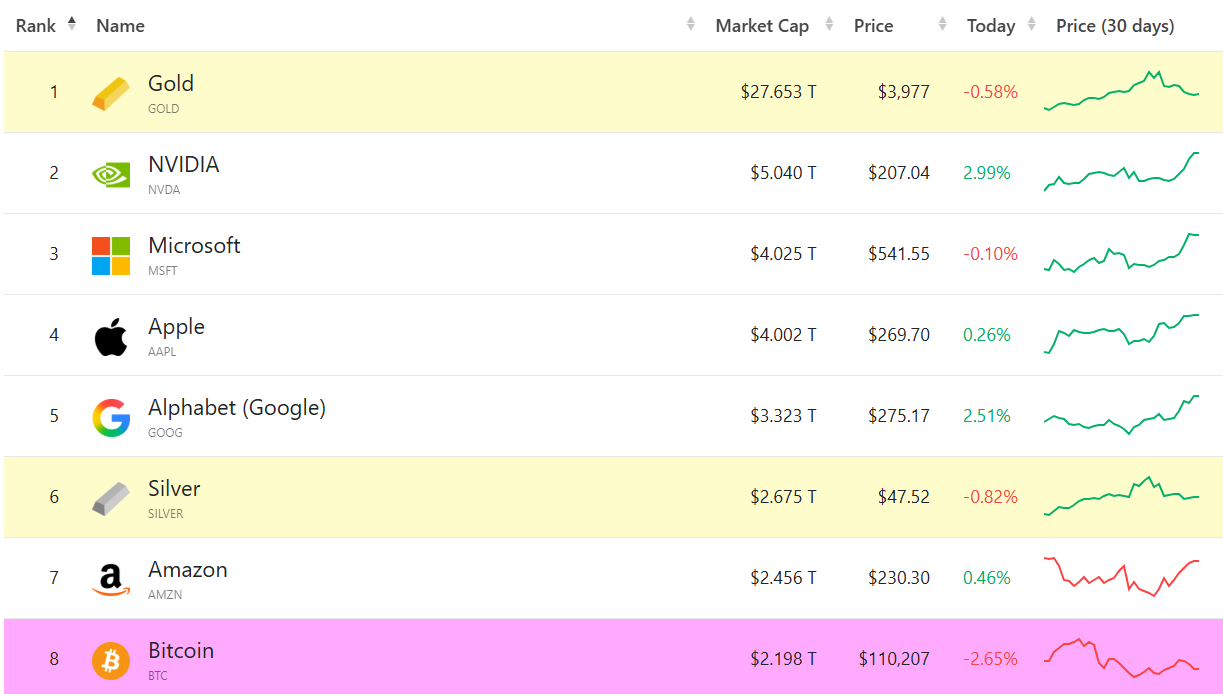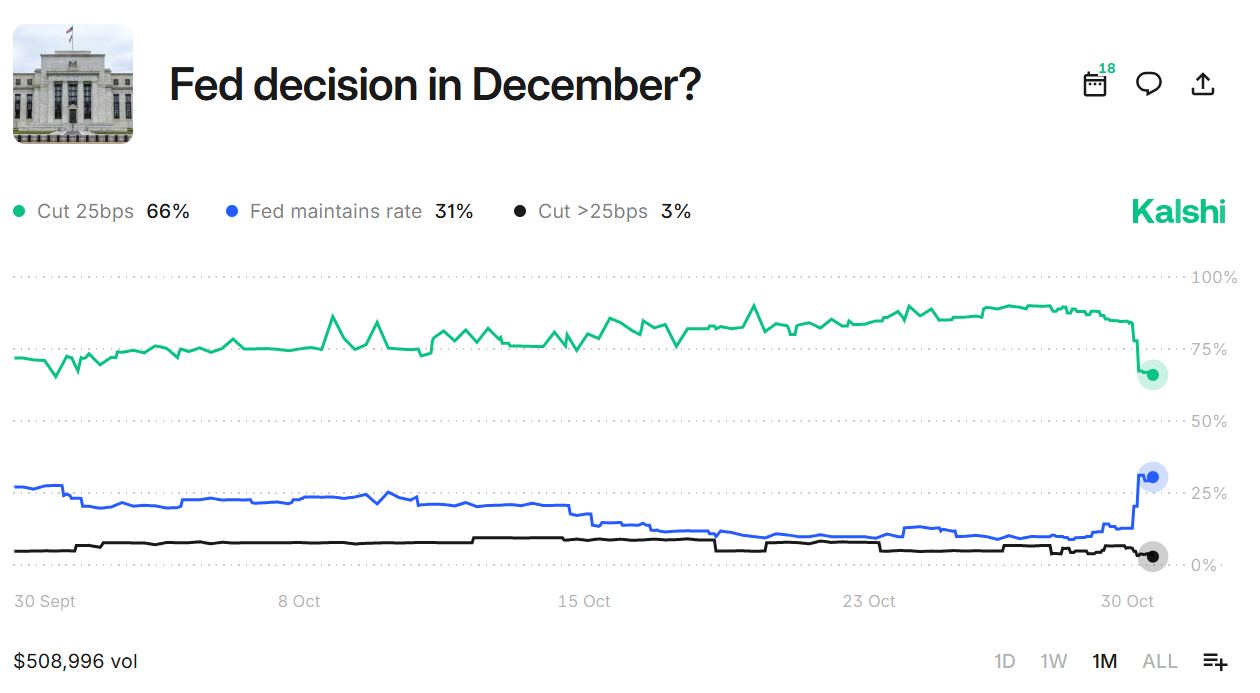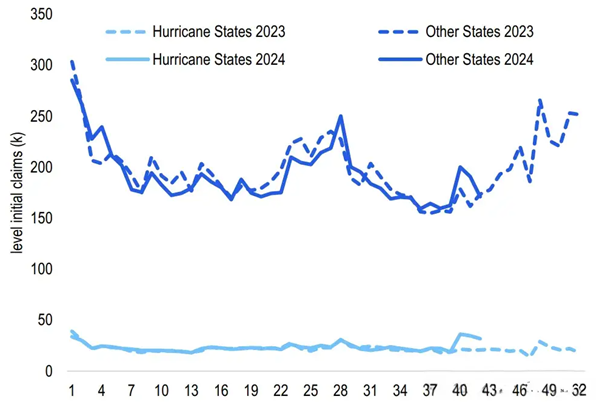市场资讯及洞察

Major companies have announced over 25,000 layoffs in the U.S. this month alone, with Amazon leading the charge with 14,000 announced corporate job cuts.
This number may increase to 30,000 for Amazon by the end of the year, as CEO Andy Jassy pursues a vision of operating like "the world's biggest startup.”
Other big corporations have followed the same trend, with Target making 1,800 corporate cuts, Starbucks 2,000 positions, and, in Europe, Nestlé plans for over 20,000 cuts.
What distinguishes this round of layoffs is the focus on white-collar roles seen as vulnerable to AI-driven automation—affecting middle managers, analysts, and corporate staff.
Gartner analysts predict that by 2026, one in five organizations will use AI to eliminate at least half of their management layers.
According to a KPMG survey, 78% of executives face intense pressure from boards and investors to prove AI is saving money and boosting profits, with traditional metrics often failing to capture its business impact.

Ford CEO Jim Farley warned that AI will "replace literally half of all white-collar workers," while Salesforce's Marc Benioff claims AI is already doing up to 50% of his company's workload.
Anthropic CEO Dario Amodei predicts AI could eliminate half of all entry-level white-collar jobs within five years, potentially spiking unemployment to 10-20%.
Nvidia Makes History Again As First $5 Trillion Company
NVDA hit a $5 trillion market on October 29, becoming the first company in history to reach this milestone. The achievement came just three months after breaching $4 trillion, further cementing its position as the dominant force in artificial intelligence infrastructure.
Since Q4 2022 — when Chat-GPT launched and began the AI-boom — Nvidia shares have climbed by over 1200% and Nvidia's valuation now exceeds the entire cryptocurrency market and equals roughly half the size of Europe's benchmark Stoxx 600 index.

The milestone comes on the back of CEO Jensen Huang unveiling $500 billion in AI chip orders and plans to build seven supercomputers for the US government.
However, there are warnings that AI's current expansion relies on a few dominant players financing each other's capacity, and valuations may be running hot. The real test comes on November 19 when Nvidia reports its quarterly results.
Fed Lowers Rates, but May Be Last Cut of 2025
The Federal Reserve delivered a quarter-point rate cut last night, but Jerome Powell's post-meeting press conference sent a clear message: don't expect another cut anytime soon.
While the Fed moved forward with the expected reduction, Powell pointed to two key obstacles that may prevent further easing this year. First, the ongoing federal government shutdown has created a data blackout, depriving policymakers of critical employment and inflation reports.
Second, Powell revealed "strongly differing views" among Fed officials about the path forward, with a "growing chorus" advocating for a pause before cutting rates again.
Markets responded by adjusting expectations, now pricing in roughly two-to-one odds for a December rate cut — down from what had been considered more certain just hours earlier.

While the Fed still seems to remain committed to eventual rate cuts, the timeline has become dependent on the government shutdown and clearer economic signals about inflation and employment trends.


Never has the oil been trickier than it is right now. The influences on the price are complex, varied and time dependent. It’s even trickier when you look at it from the trade of commodities versus equities.
Here are the key things that are catching our attention with oil trading in spot, forwards and equities. Spot vs. Anticipatory Market While WTI and Brent prices are influenced by current ('spot') market conditions, they are not solely determined by them.
There is a level of anticipation of supply, and these are priced through mechanisms like storage and forward curves. This allows the market to shift supply into the future or pull it forward as required. Right now however, demand and supply are so out of traditional cycles, pull forwarded supply is being re-stocked and future supply cut to offset the current scenario.
This might explain why forward curves are inverting – these curves are crucial in regulating the anticipatory nature of oil prices. Forward curves represent the market's expectation of future prices and influence current trading behaviours. Clearly even with supply cuts.
The market expects price to fall further if the forward curves are to be believed. Investment Time Horizons Do not forget the fundamental market pricing in equities. Share prices reflect prospective multi-year earnings growth.
The future earnings of a company can drive up its stock price today because equities discount future earnings to the present. This can explain why oil espoused equities are outperforming spot prices. The spot market does not look as far ahead.
Recent Market Reaction: The sharp negative reaction to OPEC's recent production decision seems irrational in light of the projected tightening of the oil market. The analysis indicates that crude oil inventory draws could reach up to 2 million barrels per day (mb/d) during the third quarter (3Q), suggesting a tighter market. Despite this, the current market sentiment reflects a different view, possibly driven by shorter-term concerns or overreactions to OPEC's decisions.
Seasonal Considerations: Between May and August, global demand for refined products typically rises by approximately 3.2 million barrels per day (mb/d). A similar increase is expected for 2024, driven by seasonal factors. Fundamentals assume oil prices reflect the expected supply/demand balance about 2-3 months into the future.
With that in mind, and looking at demand history Brent might have found a floor in the high-$70s per barrel range and are likely to recover in the coming months. The front-month Brent future for August delivery, are above July and shows that traders are already factoring in the peak northern summer demand. But, and it’s a big But, unlike last year's northern summer tightness which significantly boosted Brent prices higher-than-expected, inventories have tempered expectations.
Thus, calls for Brent to reach $90 per barrel now appear overly ambitious. With inventories higher than previously anticipated, the short-term forecast has been adjusted downward by $1.5 to $4 per barrel for the coming quarter to $$80-$86 a barrel. Post the northern summer period futures are falling fast as those seasonal demands, turning tailwinds into headwinds.
Previous forecasts already showed a declining price trend post the summer quarter. Considering the anticipated surplus in 2025, Brent prices may struggle to maintain the $80 per barrel mark next year. And this will start to impact not just spot and futures but also equities.
The OPEC dynamic OPEC has extended its production cuts, including additional voluntary cuts, through the end of 3Q. Assuming compliance (watching Iran, Iraq and Venezuela here) OPEC production is expected to remain stable during this period. OPEC is expected to remain proactive in managing production levels.
There is a realistic chance that OPEC will limit the unwinding of production cuts well into 2025, preventing a significant price drop and regulate price extraction. Saudi Arabia is known to want a floor in the price at $85 a barrel. Then there is non-OPEC – a temporary slowdown in non-OPEC supply growth is anticipated due to the timing of new projects.
This is interesting as historically non-OPEC loves to step in and soak up cuts from OPEC but appear to be caught slightly on the hop this time around. Limited production growth is expected through September but will increase into the back half of the year and into 2025 as OPEC holds the line. This push pull between the two groups is likely to see a supply surplus and modelling suggests this will make maintaining Brent prices above $80 per barrel challenging.
A full $5 below the comfort level of OPEC. It suggests that OPEC could step in again and cut supply to drive the price higher. However this is when we would expect smaller nations in the OPEC group to splinter as the impact on them is greater than larger players.
Implications for Market Participants Short-term Traders: Should focus on the anticipated supply-demand balance in the next 2-3 months. The expected tightening in 3Q suggests potential price support or increases in the short term. Be ready for price shifts in September and rapid changes in curve the closer we get to August expiry.
Long-term Investors: Need to consider the broader outlook, including potential seasonal shifts, OPEC's future production decisions, and long-term production growth from non-OPEC countries. Look also to forward earnings estimates, possible consolidations and firms that start to pivot from pure oil exposure. This is gaining momentum at the likes of BP, Shell, Woodside and the like.
The long-term dynamic of oil is really that of structural decline as the world moves to renewables and EVs. This is years away no doubt, but the changes and future earnings impacts are starting now – so be alert. Overall, while immediate market reactions can sometimes seem disconnected from longer-term fundamentals, a nuanced understanding of both short-term and long-term factors is crucial for effective oil market analysis and trade decision-making.
The recent analysis reflects adjustments based on current market conditions and forward projections and we hope this provides a baseline for those of you looking at oil and the tricky trading conditions that are present.


Last week I highlighted Governor Chris Waller’s speech – however the more I look into his talk the more it needs greater emphasis as it contained both hawkish and dovish elements. The Hawk Waller indicated that he would need at least three more months of "good" inflation data before considering a rate cut. He was suggesting this might happen late this year or early next year.
The Dove However, while he supports delaying the first cut, he emphasised that he does not expect to hike rates further. More importantly he highlighted that once the initial cut is made it should be followed by a series of cuts at no slower than a quarterly pace. That is a pretty aggressive stance it gives traders a clear understanding that once the Fed starts lower yields will be coupled with lower USD values – it’s just a question of when does it start?
The catch will be EUR, GBP, SEK etc are also facing dovish central bankers so these pair will have some push on them. Just remember ‘don’t fight the Fed’. Toeing the line Waller also reiterated the now-standard Fed caveat about rate cuts: a significant weakening of the labour market would prompt Fed officials to cut rates earlier or more aggressively.
Reviewed the plethora of labour market indicators out of the US and it is pretty clear further softening is likely. Looking at the non-farm payrolls in April only 175k jobs where added, and the forward-looking May hiring surveys show further slowdowns. Risks are skewed to the downside, and a sub-100k or even negative reading in the next few months wouldn't be surprising.
Hiring rates according to JOLTS and hiring intentions according to NFIB have dropped rapidly, and the employment subcomponents of services PMI and ISM are below 50 in most states. Now, the unemployment rate, currently sits at 3.9%, the Fed’s year-end forecast is 4.0% that could be reached this month – so next week’s NFP is going to huge for US indices and USD bulls that are staking everything on a ‘soft-landing’ and rate cuts in 2024. Looking to the next major indicator - Retail sales, which have been weak in the first four months of 2024.
It’s clear rate rises are biting, and consumers are depleting their excess savings acquired during the COVID years. Retail discounts are starting to ramp up have just to maintain sales volumes. This leads us to real GDP growth because it has a mixed set of data.
Real GDP slowed to an annualised 1.6%, but inside that figure was final private domestic demand. Which was buoyed strong consumer spending and contributions from business and residential fixed investment seeing it come in at 3.1%. A contradiction to the retail sales numbers.
However, investment looks to be weakening, with durables orders and shipments remaining soft in the second quarter of the year. Couple is with high mortgage rates and house prices have also resulted in softer housing data. This suggests that private demand in Q2 will eventually fall back in line with other components of the GDP reading.
All this again backs the consensus trade views that US indices are riding the soft-landing wave and are in the main driving USD inflow. Great example is AUD/USD – the AUD has been a huge performer in 2024 as the RBA looks to be pushing out expectations of rate cuts, couple this with booming commodity markets and a China looking to bounce out of malaise, yet the pair is stuck in a range of $0.64-$0.67. Against EUR, GBP JPY the AUD is going one way – not in the pair though and shows how attractive the US is for investment and flow.
Let me come back to Waller’s ‘good’ quote on inflation. In his remarks he suggested this week’s PCE expected to come in around 0.24-0.26% MoM April a "C+" grade. That would suggest sub-0.22% is "good” and would need several months of that kind of figure to move.
This is a figure traders need to have in the back of their minds each month especially on the lead up to and just after the data hits the wires. One final part of the PCE - Fed minutes indicate that a further slowdown in shelter prices will be crucial for Fed officials to be confident that inflation is easing. This is yet to materialise in the data.
Considering how big a component housing is it needs to slow in this week’s reading or rate cut expectations will drift out even further. Speaking of the PCE what is expected? The Trade week Monday saw the US observe the Memorial Day holiday and trade leading into it was limited.
Al three major indices finished last Friday in the green with is a positive sign as holding long positions over a long weekend is rare. In short – indices will be a bit directionless until Wednesday as only then will global markets get their first trading day of the US week. Thus, we need to turn our attention to end of the week and position for the most important release of May PCE inflation on Friday.
This is a core metric of the Fed and if there is any chance of several rate cuts in 2024 this piece of the puzzle must show structural signs of decline. Based on CPI and PPI elements, the consensus estimates are for core PCE to rise by 0.24% MoM, rounding to 0.2% for the first time since December. Shelter inflation should slow gradually, and core services ex-shelter inflation should also slow relative to March.
The consensus range for core PCE is 0.20-0.26% MoM, we will await if this boosts Fed officials' confidence that inflation is moving towards 2%. The biggest take out of the consensus data is all expect April to show a slowdown in spending. Weaker goods spending which correlated from the weak retail sales last week should override a modest 0.4% MoM increase in services spending.
Overall real spending should remain flat. This will create debate in the market as indices bears point to the recent increase in Services PMI, as a sign of accelerating services activity and thus inflation is a long way off ‘returning to sustained level of inflation’ The second release of Q1 GDP will be out on Thursday, providing more comprehensive data on components like net exports, investment, and consumption. With March retail sales revised lower, there is a risk that consumption growth could also be revised down.
Case Shiller index due Thursday is expected to increase by another solid 0.63% MoM in March but anticipate softer home price increases in the coming months due to signs of weakening housing demand and improving supply of existing homes. Final part of the puzzle for trader is always Fed speak and there is a big one this week with NY Fed President Williams on Thursday. Recently, he indicated that he does not expect to gain "greater confidence" on inflation in the near term – and he is a voting member of the Board.
Turning to home: Oz data to watch Inflation April's CPI data is due Wednesday. Consensus is headline CPI to slow to 3.4% YoY from 3.5% in March (range is 3.2%-3.5%), following three months of flat or rising prints. As this is the first print of the second quarter, the sample will likely skew towards goods prices, resulting in softer monthly growth, consistent with the prior two quarters.
Either way a further softening in the monthly data will elevate fears the RBA’s narrow path is evaporating. Retail sales came out on Tuesday at 0.1% MoM a 0.5% jump on the March read. However, this blurs the biggest take out the annual growth is at historically low levels outside of the COVID period (1.2% YoY).
Consumers are finally slowing their spending habits. Australia 200 The A200 ended a five-week winning streak, on Friday down 1.1% for the trading week. For the month A200 is up 1.36%, any good news that can be taken from the CPI data on Wednesday should see the index lock in a positive May over all.


Let’s make things very clear – Australia’s inflation rate is plateauing in fact I would argue it’s starting to reaccelerate in areas Australia can least afford. From a trading and momentum perspective this needs explaining. Stronger Than Expected Print April's CPI data exceeded expectations and was at the very top of the surveyed range.
Headline CPI increased by 3.6% YoY, well ahead of the consensus of 3.3% YoY. Seasonally adjusted, the increase was even higher at 3.8% YoY. Both the headline and core CPI rose for the third consecutive month.
This is a major concern. Now, the monthly increase slowed sequentially to 0.2% MoM, annual headline inflation has risen every month in 2024. Then the RBA’s core: trimmed mean inflation rose from 4.0% to 4.1%, and the ex-volatiles measure increased from 4.1% to 4.2%, with a three-month annualized rate of 5%, there is clear daylight between the RBA’s target band of 2%-3% and the core measure of inflation Here is the chart of the three main figures.
Monthly CPI Indicator annual moment (%) All this makes the RBA’s ‘narrow path’ almost unattainable. A point not lost on the AUD and the ASX as seen by each one’s initial reactions. ASX 200 v AUD/USD Source: Refinitiv Broadening Persistence However, with the passage of time the data is throwing up bigger concerns – and that is the persistence of price pressures in areas that make up large parts of the CPI basket.
The expectation for a weaker April CPI print was based partly on the skew towards goods in the sampling for the first month of the quarter which have been in structural decline. However, both goods and services contributed to the rise. Notable increases were seen in categories such as: Fruit and vegetables: from -1.2% YoY to 3.5% YoY Apparel: from 0.3% YoY to 2.4% YoY, with a 4% MoM increase Healthcare: from 4.1% YoY to 6.1% YoY The upside surprise was mainly due to significant increases in volatile expenditure items, including: Fruit: +7.3% MoM Oils and fats: +4.6% Women's garments: +4.5% Children's garments: +6.8% Accessories: +3.6% Furniture: +3.3% International holiday travel and accommodation: +11% These items constitute 7.5% of the CPI basket and largely explain the forecast miss.
Then you have clothing, which was expected to fall by 0.4%, rose by 4.1%. Furnishings, household equipment, and services, expected to be flat, all increased by around 0.6%. Recreation and culture, predicted to rise by 0.8%, actually went up by 2.3% in April.
This point was not lost on the Bond market with both the 3-year and 10-year Australian bonds surge on the data seen here: Australian 3-yr and 10yr Bond reactions Source: Refinitiv (Blue 3-year, White 10-year) Goods Prices Acceleration You can certainly explain away the volatile items as being affected by the early Easter period and a correction in the March data that had these items under pressure. But that ignores the seasonal and 3- and 6-month averages which are still high. You can also ignore the volatile international travel and accommodation sector, which accounted for much of the forecast miss, but again you can’t ignore the acceleration in goods prices where deflation was expected.
Categories such as clothing & footwear, furniture, and other major household and electronic appliances, typically measured once per quarter, suggest that goods inflation will likely remain strong. The monthly measurement of goods inflation rose by 0.9% in April, adding 0.2 percentage points to the headline monthly CPI, marking the largest increase since April last year. Services Inflation – the ‘sticking’ point One of the floors with the April CPI print is that is was heavy on goods prices but light on services.
This will be reversed in May - services prices are expected to remain fairly sticky. These are the areas the media like to quote like dentists and hairdressers. But somewhat cheapens the services that do move the dial, rents, telecommunications, financial service and insurances etc. these are big components of the CPI basket.
Considering the upside miss in April and the anticipated persistence of services inflation in May and June, the consensus now for Q2 headline CPI has been upwardly revised to 0.9% QoQ (range of 0.6% to 1.2%), that implys an annual reading of 3.7%. For core inflation (trimmed-mean), it has been adjusted to 0.8% QoQ, implying an annual reading of 3.8% - which is in line with the RBA’s new forecast. Implications for the RBA The implications from this CPI print will challenge the Reserve Bank of Australia (RBA).
It does pressure its assumption that the re-acceleration in inflation in Q1 would quickly revert. The unexpected strength in goods in particular coupled with sticky services suggests more persistent inflationary pressure than initially anticipated. It also shows that ‘inflation psychology’ is real – there is an argument to be made that spending has maintained on the ‘idea’ cuts would come because inflation is falling.
Which has left enough demand in the economy to hold inflation up. So, does this imply the RBA is about to raise rates? Here is the market’s pricing on that idea.
Interestingly enough despite the hawkish risks, the likelihood of the RBA hiking rates is still tempered in the market and explains why the AUD in the hours since the CPI has moderated. Why? Emerging signs of activity weakness.
Retail sales have been weak, corroborated by several companies reporting soft trading updates. Then there was Q1 construction work done which was released at the same time as the CPI data - significantly missed expectations (-2.9% QoQ versus the expected 0.5%) that is a huge miss. Things the RBA will be watching over the coming week is the Fair Work Commission's Minimum Wage decision on Monday and the Q1 GDP release next Wednesday.
These events will be crucial in assessing the broader economic outlook and potential RBA policy responses. Anything that has an upside surprise should be seen as a AUD positive and an index negative. The RBA will likely need to jawbone this result to further slow household demand for non-essential items, which is way we highlight the ‘inflation psychology’ term and the effect ‘anticipation’ is having.
However, as the market and economist point out it is unlikely that the RBA will increase interest rates again, as this would disproportionately impact households already struggling under tight financial conditions. Thus – we are stuck in this weird holding pattern and as other central banks around the world begin to cut rates it will attract flows to the AUD and its higher yields. There is a silver lining here too – as countries cut due to their respective disinflation moves and thus cheaper imports, this will benefit Australia’s inflation problem but that is a way off and the AUD will remain attractive for a while to come.


The USD saw decent strength in Wednesdays session, with The US Dollar Index (DXY) rising from an open of 104.67, pushing through the resistance at 105 to hit a high of 105.14 on the back of firmer US Treasury yields. Despite this rally DXY is heading into the end of the month looking to have its first monthly decline since December 2023. Ahead today we have US GDP as well as several Fed speakers, including Williams at the Economic Club of NY.
JPY declines against a resurgent USD with rising US yields pushing the US10Y-JP10y rate differential higher. USDJPY remained above 157.00 and pushing to a high of 157.74 and back in the April intervention zone. Remarks from BoJ Board Member Adachi, who stated that if excessive Yen falls are prolonged and expected to affect the achievement of the BoJ's price target, responding with monetary policy becomes an option, failing to help the Yen significantly.
AUD, and to some extent NZD, saw some short lived strength after a hotter than expected Aussie CPI reading in the APAC session. This strength did fade in the UK and US session with both the AUD and NZD currencies resuming their weakness, tracking risk appetite. AUDUSD just holing above the psychological 0.66 level heading into Thursdays APAC session.


We know that this is slightly contrary to the consensus views but we think it needs to be said. The communication from the RBA (Reserve Bank of Australia) is unusually unclear, confusing and conflicted. The view conveyed in statement, press conference and minutes currently we would argue counter each other.
And the reason for this we believe is because the RBA is a reluctant hawk and is frightened to act. Let us now present why we think this and what it will mean for FX and yields in particular. The RBA has just completed a mass review of its operations and one of the key changes was to improve transparency.
This included press conferences, extended meetings, and more public discussions from members. The catch with this has been the mixed communications. Take for example the statement which was extremely ambiguous.
It was filled with terms like uncertainty, mixed signals, and complexity. It explains why the statement has this line: ‘the path of interest rates that will best ensure that inflation returns to target in a reasonable timeframe remains uncertain and the Board is not ruling anything in or out.’ That’s fair – things are complex and we understand why the board is waiting for more data. That was countered with this: ‘ The Board remains resolute in its determination to return inflation to target and will do what is necessary to achieve that outcome.’ Historically, whenever the Board has included such a resolute statement in its communications, they followed up with a cut or a hike in the preceding meetings – the frightened hawk is there and strongly suggests that a rate hike is likely.
The initial AUD reaction to the statement we think shows why the communication is mixed. Then take the press conference – Governor Bullock’s were much stronger than the statement, indicating a significant stance, not really clear in the statement. As mentioned, the Board stated they are not ruling anything in or out, but in reality, they have dismissed the possibility of rate cuts.
That was confirmed when Bullock was asked on this exact point and confirmed that rate hikes were the only things discussed. There was no ongoing discussion about cuts in the near or medium term as they do not expect inflation to reach their target by mid-2026. The Board’s concern is that inflation is notably higher than expected, employment is solid and that overall demand is still generating inflation.
The reaction to all this was clear here: The next notable reaction was the interbank market. All though it doesn’t appear like much in this chart. Please understand this change is actually from a ‘cut’ to ‘hike’ so yes there is a 10% chance of a hike, that is from a 10% chance of a cut.
July will be crucial with substantial data releases, including the second quarter CPI (July 31), GDP figures, and the wage price index. Current forecasts suggest that inflation and employment are performing better than expected, raising concerns about the need for a potential harder landing in the economy to return inflation back to target. The focus is now shifting towards slowing down the economy further despite the per capita recession because in the RBA’s view the impact on the household’s price power in the future from high inflation is still too high.
Future Rate Decisions All things being equal – with the RBA turning itself in knots and trying so hard to stay the course the RBA's commentary suggests it still has preference to hold rates if possible. The big issue as it acknowledges is the possible need for near term tightening due to a lack of progress towards inflation targets. Here is the market’s forecast for rates post the meeting on Tuesday Which probably explains the AUD/USD reactions in the following 24 hours It flatlined – thus the market is telling us that it needs a catalyst, and those catalysts are clearly coming in July.
So to finish what’s the key? A significant upside surprise in the RBA's core inflation measure could lead to a rate hike, despite slowing demand and labour market conditions. We get the monthly inflation data next week, this will be the first strike then the July 31 quarterly read.
This will be huge and will be the biggest AUD mover outside of an RBA meeting. We will be providing as much information on this release the closer we get to the release. However as shown the RBA is a terrified hawk and without this inflation beat, the risk of further tightening diminishes, with expectations for the RBA to remain on hold until potentially the first rate cut in February 2025.
The next RBA meeting on August 6 it’s going to be an interesting 6 weeks for AUD traders ahead of what is a likely live event.


热门话题
9月中旬美联储超预期降息,10月中旬开始伴随着特朗普的支持率上升盛行的特朗普交易,加上10月初非农就业数据超预期强劲,以及中国政策方向的超预期转向,种种因素形成合力——最终我们看到:美股基本延续强劲,纳指创新高,A股虽然波动较大,但回调后也有明显走强,黄金屡创新高,加密货币暴涨。整体上,风险资产表现良好。但是,在美国大选前这个潜在分化巨大的时间节点上,市场表现出来的稳定性显得略有“反常”。

当前市场对于“特朗普交易”的定价,一方面是政治选择性的,偏向定价正面影响,包括进口关税增加、国内税收下降以及赤字扩大影响下的美元美股强劲;另一方面,尽管特朗普支持率上升,他的领先幅度并不确保胜利,仍然存在特朗普+分裂国会的可能性。上周我在文章里说过了,只有在共和党控制国会和特朗普当选同时发生的前提下,特朗普的政策才有望得到最大程度实施。在此背景下,市场波动将加剧。非农就业数据上看,超预期和不及预期可能获得市场一致解读从而助推美元。8月初和9月初的数据不及预期,导致美股和日本股市大幅回调。而本周五即将公布的非农就业数据很可能显著低于9月的254,000,市场预期的新增就业数据为115,000,失业率将维持在4.1%。市场普遍认为,飓风对就业将带来显著影响,彭博部分经济学家更是预测非农数据可能首次转负。然而,即便就业人数下降至115,000,因市场预期已经调低,所以市场仍可能解读经济韧性仍较强,甚至推动利率继续上升,从而利好美元。如果本次非农数据极为疲软,加上美股等风险资产已经累积相当涨幅,叠加大选情绪渲染,可能引发市场避险上升,日元和黄金都是常见的避险品类。另一种可能性是,市场冷静后或将此次较差的就业数据视为暂时性问题,类似于8月数据差只是因天气差造成的偶然情况,这样的解读可能会导致美元短期下跌调整后出现反弹。而且,数据也显示,本次只有飓风州的失业申领上升,其他州是下降的,这代表本次数据可能只是一次由天气因素主导的偶然事件,就业市场并没有显著恶化。

除金融市场外,工业金属和原油的定价同样存在波动。9月底中国政策转向超预期,令空头承压的大宗商品价格出现反弹,分析师预测特朗普增加进口关税这一政策路径的实际风险仍未完全计入。由于加关税不需国会批准,若特朗普当选即可能直接落实,这将对铜等工业金属形成冲击。上周末,以色列和伊朗军事行动规模低于市场定价,国际油价随之暴跌,美油(USOUSD)由$72.25短线跳水、当前处于$68左右的震荡水平。原油价格受以色列和伊朗冲突影响曾居高不下,但地缘政治溢价逐渐褪去后,市场可能已重新审视原油供给增长对油价的冲击,华尔街分析师预测明年油价将进一步回落。地缘冲突往往在真正爆发时令油价回调,因为市场会提前对最坏结果进行定价。

总体上看,当前美股强势、黄金屡创新高,均是市场在美国大选前不断权衡不同因素的结果。在未来几周,尤其是关键经济数据和企业财报发布的窗口期,全球市场仍可能面临进一步的波动风险。免责声明:GO Markets 分析师或外部发言人提供的信息基于其独立分析或个人经验。所表达的观点或交易风格仅代表其个人;并不代表 GO Markets 的观点或立场。联系方式:墨尔本 03 8658 0603悉尼 02 9188 0418中国地区(中文) 400 120 8537中国地区(英文) +248 4 671 903作者:Christine Li | GO Markets 墨尔本中文部

